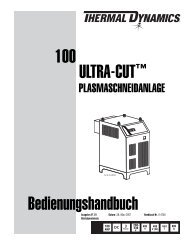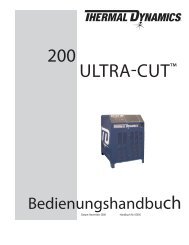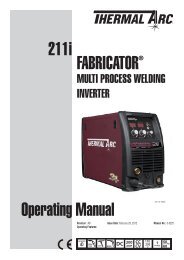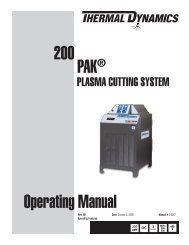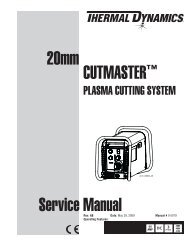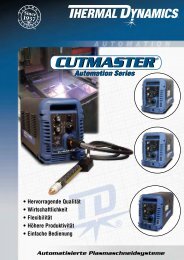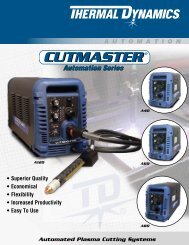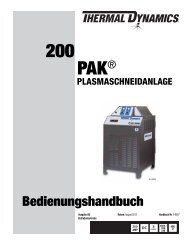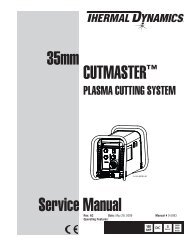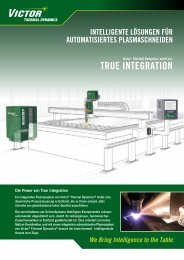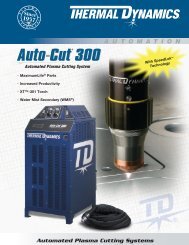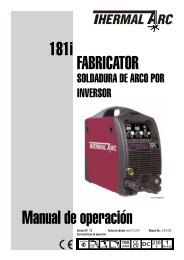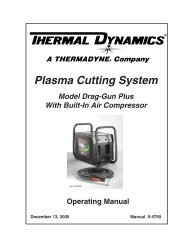DocLib_42_0-4905 ArcMaster 400MST CE.pdf - Victor Technologies ...
DocLib_42_0-4905 ArcMaster 400MST CE.pdf - Victor Technologies ...
DocLib_42_0-4905 ArcMaster 400MST CE.pdf - Victor Technologies ...
You also want an ePaper? Increase the reach of your titles
YUMPU automatically turns print PDFs into web optimized ePapers that Google loves.
3.07 High Frequency Interference<br />
Interference may be transmitted by a high frequency initiated or stabilized arc-welding machine in the following<br />
ways:<br />
Direct Radiation<br />
Radiation from the machine can occur if the case is metal and is not properly grounded. It can occur<br />
through apertures such as open access panels. The shielding of the high frequency unit in the Power<br />
Source will prevent direct radiation if the equipment is properly grounded.<br />
Transmission via the Supply Lead<br />
Without adequate shielding and filtering, high frequency energy may be fed to the wiring within the<br />
installation (mains) by direct coupling. The energy is then transmitted by both radiation and conduction.<br />
Adequate shielding and filtering is provided in the Power Source.<br />
Radiation from Welding Leads<br />
Radiated interference from welding leads, although pronounced in the vicinity of the leads, diminishes<br />
rapidly with distance. Keeping leads as short as possible will minimize this type of interference.<br />
Looping and suspending of leads should be avoided where possible.<br />
Re-radiation from Unearthed Metallic Objects<br />
A major factor contributing to interference is re-radiation from unearthed metallic objects close to the<br />
welding leads. Effective grounding of such objects will prevent re-radiation in most cases.<br />
3.08 Duty Cycle<br />
The duty cycle of a welding power source is the percentage of a ten (10) minute period that it can be operated at<br />
a given output without causing overheating and damage to the unit. If the welding amperes decrease, the duty<br />
cycle increases. If the welding amperes are increased beyond the rated output, the duty cycle will decrease.<br />
18<br />
WARNING<br />
Exceeding the duty cycle ratings will cause the thermal overload protection circuit to become<br />
energized and shut down the output until the unit has cooled to normal operating temperature.<br />
CAUTION<br />
Continually exceeding the duty cycle ratings can cause damage to the welding power source and<br />
will void the manufactures warranty.<br />
NOTE<br />
Due to variations that can occur in manufactured products, claimed performance, voltages, ratings,<br />
all capacities, measurements, dimensions and weights quoted are approximate only. Achievable<br />
capacities and ratings in use and operation will depend upon correct installation, use, applications,<br />
maintenance and service.



